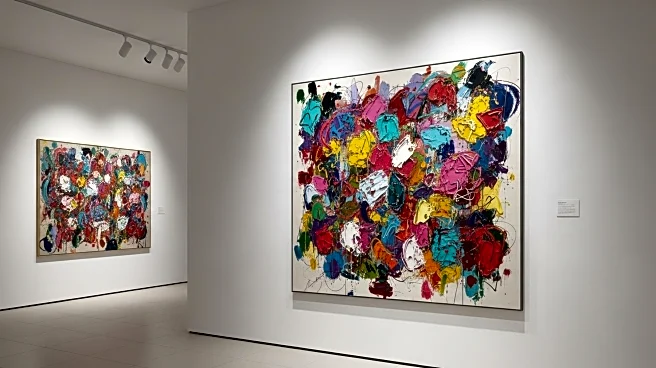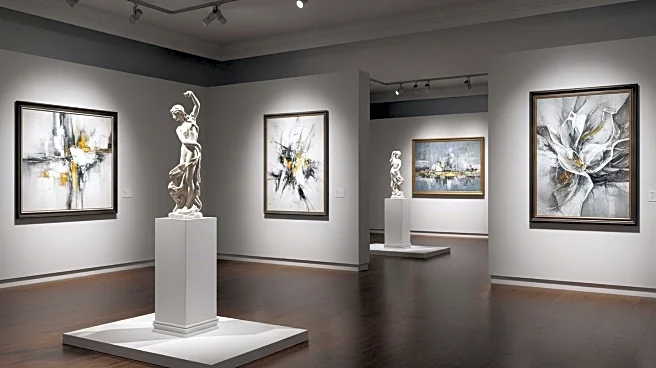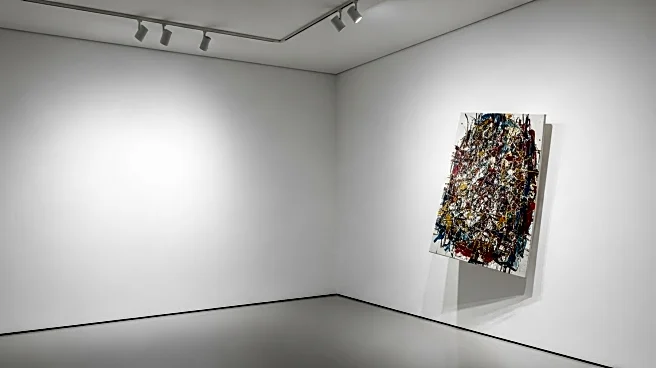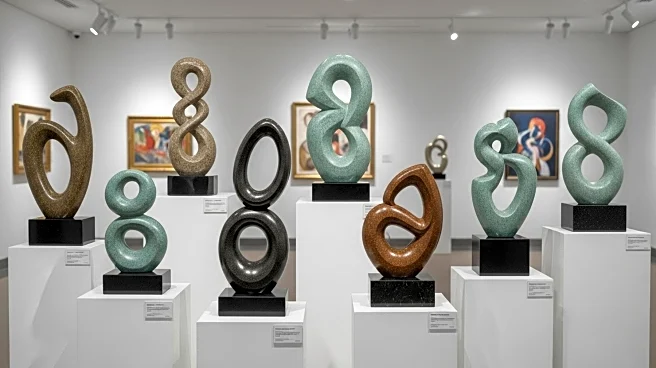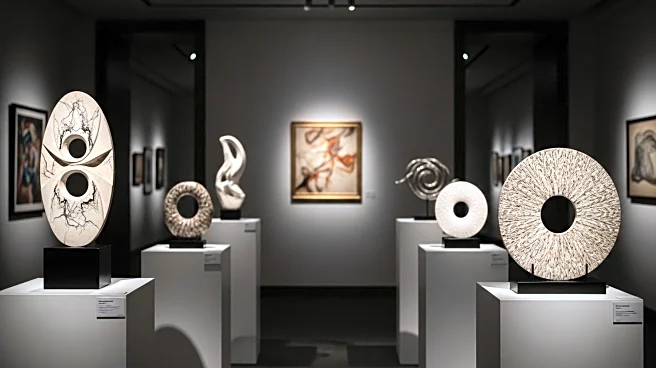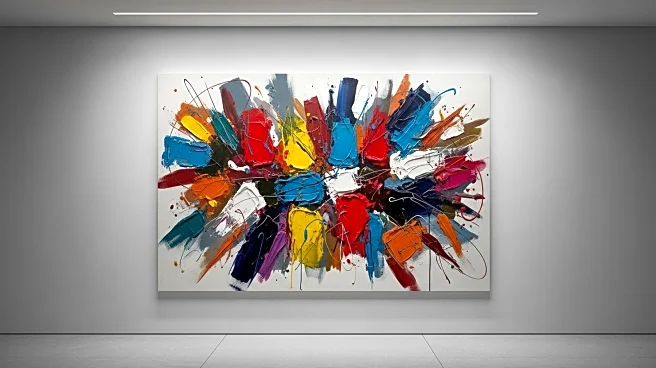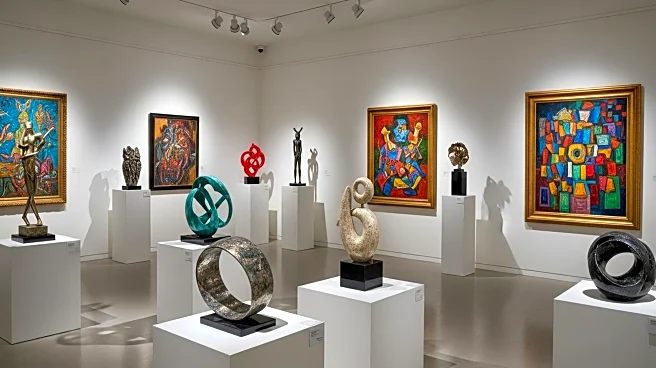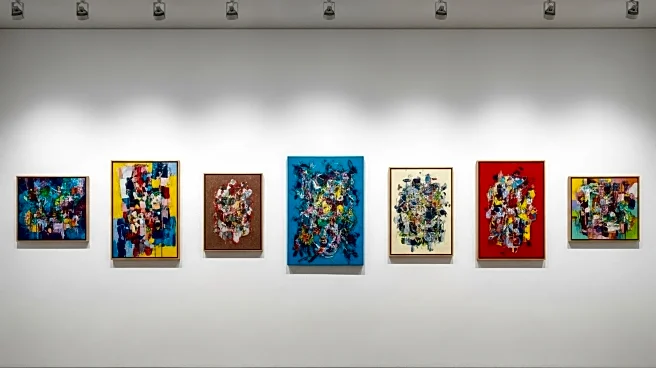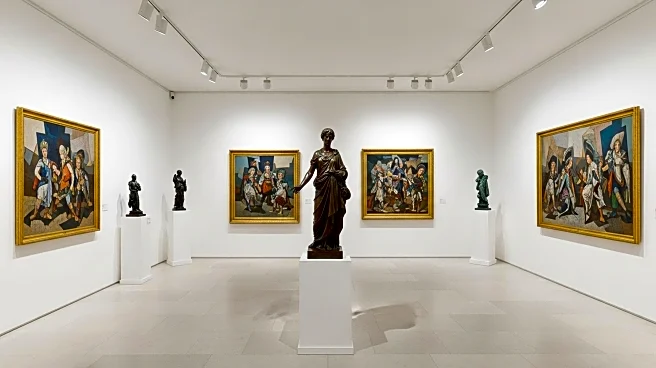What is the story about?
What's Happening?
The art market is currently experiencing a contraction, with auction houses and galleries adjusting to the fallout from previously inflated prices for young artists. According to a discussion led by Artnet's editor-in-chief Naomi Rea and senior reporter Katya Kazakina, the market has been contracting for a couple of years, reminiscent of the sharp decline in 1990 after a boom period. This contraction has led to some galleries recommending that established artists lower their prices, a strategy that some, like Carol Greene, have already adopted. Despite these challenges, major auction houses like Sotheby’s and Christie’s continue to operate robustly, handling significant collections such as Leonard Lauder's $400 million collection. However, they are also dealing with the repercussions of high prices in the secondary market, where many artworks are now selling for much less than their initial valuations.
Why It's Important?
The current state of the art market is significant as it reflects broader economic trends and the shifting dynamics within the art industry. The contraction could lead to a reevaluation of art as an investment class, particularly among younger collectors who view art differently than previous generations. This shift may influence how art is valued and traded in the future. Additionally, the adjustments in pricing strategies by galleries and artists could democratize access to art, potentially attracting a new wave of collectors. The ongoing changes also highlight the resilience and adaptability of the art market, as it navigates through economic uncertainties and evolving consumer preferences.
What's Next?
As the art market continues to adjust, it is likely that more galleries will adopt flexible pricing strategies to remain competitive. The upcoming fall auction season, bolstered by major collections, will be a critical period for assessing the market's resilience. Auction houses may continue to explore innovative ways to manage risk and attract buyers. Meanwhile, the emergence of new models, such as itinerant galleries and dealer-led boutique fairs, could reshape the traditional gallery system. The art market's ability to adapt to these changes will be crucial in determining its future trajectory.
Beyond the Headlines
The current market contraction may lead to a more sustainable art ecosystem, where pricing is more reflective of intrinsic value rather than speculative bubbles. This could foster a more inclusive environment for emerging artists and smaller galleries. Additionally, the shift in collector demographics and preferences might encourage artists to explore new mediums and themes, potentially leading to a more diverse and dynamic art scene. The ongoing evolution of the art market underscores the importance of adaptability and innovation in maintaining relevance and growth in a changing economic landscape.
AI Generated Content
Do you find this article useful?
